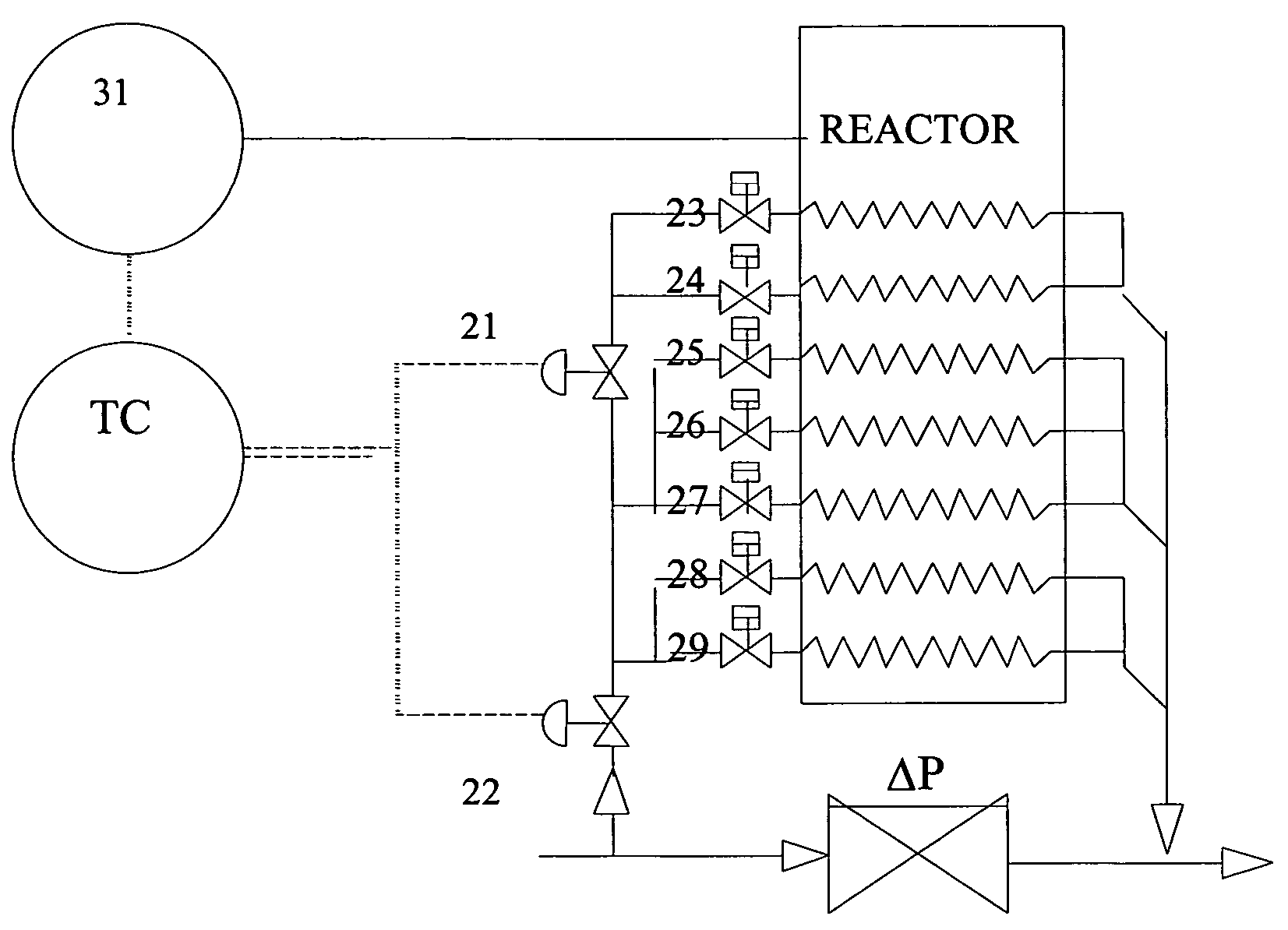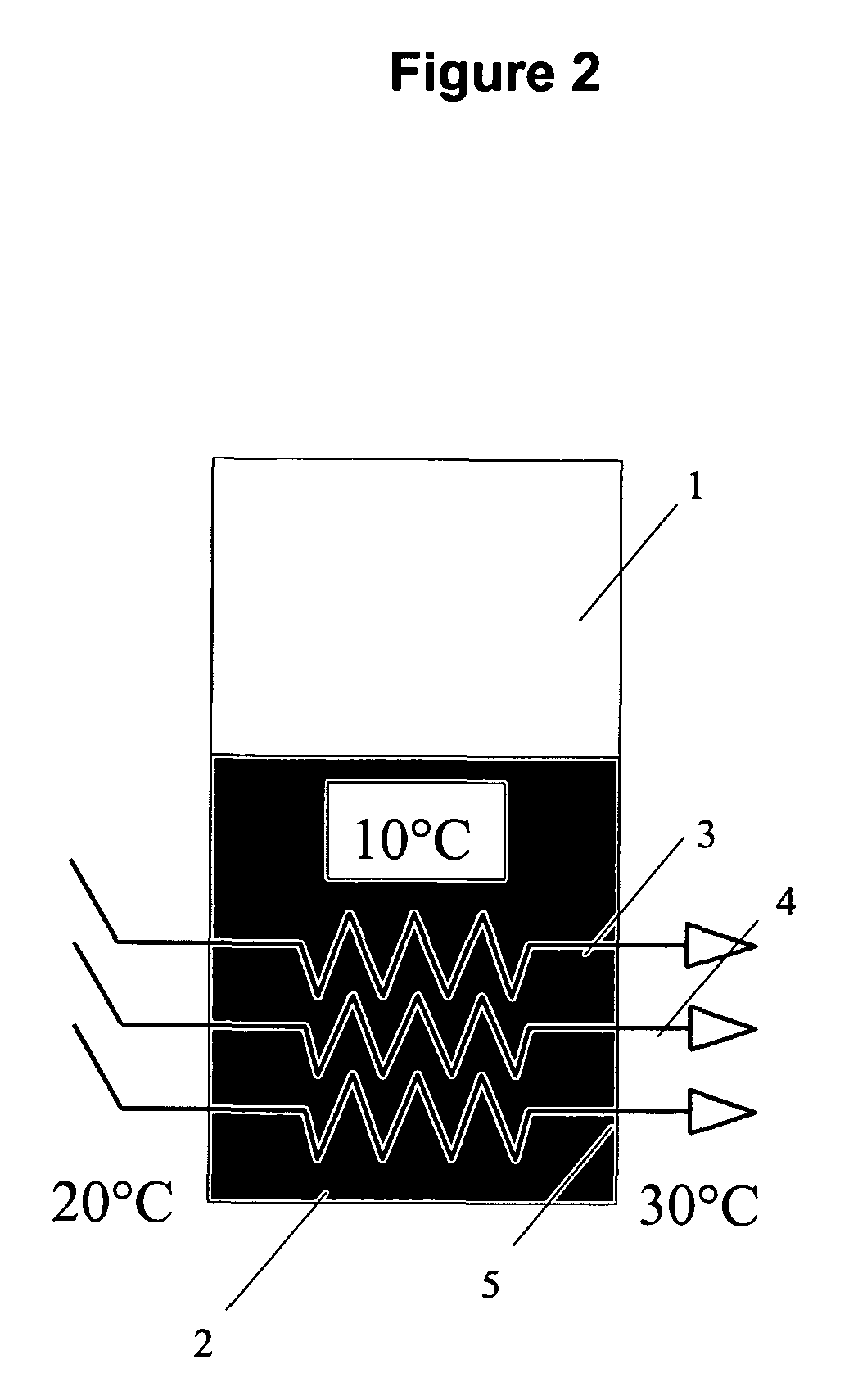Reactor heat transfer systems
- Summary
- Abstract
- Description
- Claims
- Application Information
AI Technical Summary
Benefits of technology
Problems solved by technology
Method used
Image
Examples
example 1
[0199]The heat transfer coil (3) serves two functions, it controls the process temperature and also measures the quantity of heat liberated (or absorbed); for the purpose of this example, the term tsi is used for the measured inlet temperature of the heat transfer fluid and tso for the outlet temperature of the heat transfer fluid. For effective operation, two factors need to be satisfied.[0200]i The temperature change in the heat transfer fluid (tsi−tso) must be sufficiently large to provide a good measurable difference. For this example a 10° C. temperature change of the heat transfer fluid (tsi−tso) has been selected.[0201]ii In general, the temperature difference between the heat transfer fluid and the process fluid must be as high as possible but not so great that boiling, burning or freezing occur on the pipe surface. Assume that the reaction temperature is 30° C. (tp). Also assume that the lowest temperature at which service fluid can be delivered to the system is 5° C. (to a...
example 2
[0268]Example 2 illustrates, the design of variable area heat transfer systems employing multiple coil systems such as those illustrated in FIGS. 2 and 3. As in example 1, the cooling (or heating) coil system controls the process temperature and continuously measures the heat gained or lost using information on mass flowrate through the coil, temperature change (tsi−tso) and specific heat of the heat transfer fluid.
[0269]Example 2 addresses the fact that a reactor might be required to handle exothermic reactions which generate heat in the range of 500 to 15,000 W. A range of this size exceeds the operating capabilities of the single heat transfer coil system illustrated in example 1. Such a reactor can however be effectively operated using multiple coils as illustrated in this example (in this example identical coils each 11.8 m long are used) in a cascade fashion. With one coil operating with the heat transfer fluid at 1.7 m / s, a heat load of 457 W will give a temperature rise in s...
example 3
[0271]Table 4 sets out the heat transfer capacities of a series of coils of varying diameter and length.
[0272]
TABLE 4CoildiameterCoil length rangeOperating range(mm)(m)(W)10.13-0.6 4-2220.9-2.3 40-14131.9-4.7118-42943.0-7.8249-9135 4.4-11.8 457-1660
[0273]In order to arrive at the operating range, as with example 2, the LMTD is taken as 10° C. and (tsi−tso) as 10° C. The extremes of the ranges set out in columns two and three of table 4 represent the calculated values for minimum and maximum flow of the heat transfer fluid. Minimum flow is that which results in a pressure drop (of service fluid) of 0.1 bar·m−1 and maximum flow that which results in a pressure drop (of service fluid) 1 bar·m−1.
[0274]This combination of coil diameters and lengths provides a system capable of very high turndown rations. For example a six coil reactor can be designed to operate at less than 4 W and up to 5000 W. Table 5 shows the cumulative capacity of 6 coils of varying diameter.
[0275]
TABLE 5Cumulative...
PUM
 Login to View More
Login to View More Abstract
Description
Claims
Application Information
 Login to View More
Login to View More - R&D
- Intellectual Property
- Life Sciences
- Materials
- Tech Scout
- Unparalleled Data Quality
- Higher Quality Content
- 60% Fewer Hallucinations
Browse by: Latest US Patents, China's latest patents, Technical Efficacy Thesaurus, Application Domain, Technology Topic, Popular Technical Reports.
© 2025 PatSnap. All rights reserved.Legal|Privacy policy|Modern Slavery Act Transparency Statement|Sitemap|About US| Contact US: help@patsnap.com



